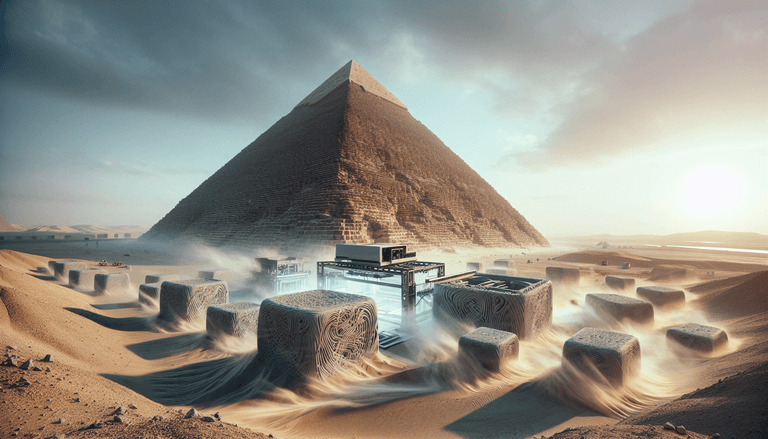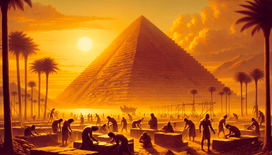Picture this: it's about 2,500 BC, the sun blazes down on the golden sands of Giza, and a young Pharaoh, Khufu, stands pondering how exactly he's going to create the greatest monument the world has ever seen. Surrounded by his architects and engineers, all scratching their chins and muttering about quarrying limestone and labour forces, a thought occurs: "What if we had that 3D printer thingamajig of the future?"
Yes, dear readers, I invite you to join me on a journey through time and technology as we explore the tantalising question: What if the construction of the Great Pyramid had incorporated 3D printing? Would Khufu have saved time, labour, and a lot of sunburn?
The Blueprint for a Pyramid Paradox
The scale of the Pyramid of Giza is nothing short of awe-inspiring. But when we think of dragging over 2 million blocks across the desert, it does sound a bit prehistoric. So, let's imagine that Khufu's foremen have just wired up (yes, wires in Ancient Egypt, go with it) a gargantuan 3D printer, perhaps looking like a mash-up of scaffolding and arachnid.
Armed with this futuristic gadget, Khufu's workers could spend less time hauling stone blocks up ramps and more time perfecting their eyeliner, because priorities, right? With 3D printing, layers upon layers of pyramid blocks would be printed on site, perhaps even with stunning hieroglyphics as part of the pre-fab package.
Printing Blocks in the Sands
It's easy to imagine the logistics team, chiselled lads and lavish ladies, who might now describe themselves as Egypt's first "tech-savvy workforce", gleefully "clicking print" on their lithographic lounging chairs, as if they were ordering a take-away.
And just think of the possibilities! One could personalise a block in the pyramid with their own little doodles, "I was here!" by Ramses II, perhaps?
A Pharaoh's Delight: Efficiency and Elegance
The efficient nature of 3D printing would undoubtedly shave years off the construction time. Instead of decades of toil, the Great Pyramid might be completed in the time it takes to update the current software, let's face it, downloads take longer than you'd expect.
This new method might encourage a most unlikely leisure revolution. Rather than sweating it out in the desert sun, Pharaoh's workforce could indulge in swanky siestas and perhaps invent the first pyramid scheme that isn't financially unsound!
Historical Accuracy, Mostly
Granted, the purists might shudder at the thought of 3D printing erasing the blood, sweat, and tears that seep through those time-weathered stones. But history often forgets the fourth ingredient required in the ancient times: a good sense of humour!
If nothing else, this alternate timeline challenges us to ponder how our own tech advancements could reshape, not just structures, but the stories and myths we pass on through the ages. "Remember when Khufu 3D-printed his way to immortality? Those were the days!"
3D Printing's Stone-cold Reality
Ultimately, even Khufu may be bemused by this modern-day "print and prosper" concept, and we have yet to figure out what the engineers fixing the inevitable technical issues would be called. "Tech support"? "Monument Maintainers"? I've a sneaking suspicion we'd call them simply "heroes."
So next time you walk past a 3D printed bauble or gizmo, remember Khufu and his grand vision outreached by over four millennia. And really, who can say? Perhaps in an alternate reality, Khufu might have created the world’s most spectacularly printed pyramid, a "blockbuster" in every sense of the word.







